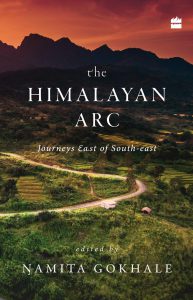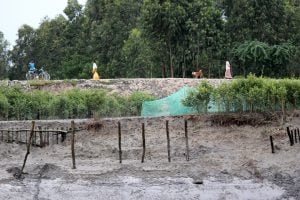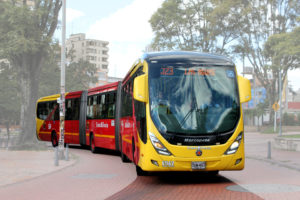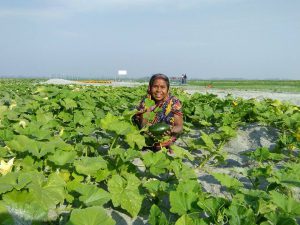The countries of the Mekong should build a “community of shared future”, said China’s Foreign Minister Wang Yi, in December last year. The Lancang-Mekong Cooperative Framework (LMC) is “practical and highly effective”, he said. “We do not go after a high-profile ‘talk shop’, but a down-to-earth ‘bulldozer’”.
China has managed to cement its influence over the transboundary river in recent years, in a move that has important implications for the riverine environment and the people that rely on its resources. Its primary vehicle, or “bulldozer”, the LMC, will drive dam and development projects, special economic zones and trade.
It also illustrates China’s changing approaches to Southeast Asia – the central topic addressed recently in a policy forum The Third Pole and chinadialogue co-organised with the Centre for Social Development Studies (CSDS) and the Faculty of Political Science at Chulalongkorn University, in Bangkok.
https://www.facebook.com/CSDSChula/videos/460645824429714/
Sharing the river
The Mekong is the world’s twelfth-longest river. It rises in China, on the Tibetan Plateau, before it runs down through Myanmar, Laos, Thailand, Cambodia and Vietnam. According to the Mekong River Commission (MRC), it is second only to the Amazon in terms of biodiversity importance, and the most productive inland fishery in the world.
In 1995, the Mekong Agreement between the downstream nations of Thailand, Laos, Cambodia and Vietnam established the MRC, to “promote and coordinate sustainable management and development of water and related resources for the countries’ mutual benefit and the people’s well-being.” China declined to join as a full member; along with Myanmar, it has observer status.
In 2015, China launched the LMC as a multilateral mechanism encompassing all six countries. (China uses the Chinese word Lancang to refer to the upstream section of the Mekong). It is headquartered in Beijing, largely funded by China, and, in the words of Thitinan Pongsudhirak, Institute of Security and International Studies (ISIS) at Chulalongkorn University, has “eclipsed, surpassed and bypassed” the MRC.
The LMC has built up its institutional structures significantly in a brief period, and its remit goes far beyond water and energy: the LMC’s so-called “3+5 mechanism of cooperation” refers to three pillars: political and security issues, economic and sustainable development, and cultural and people-to-people exchanges, and five key priority areas: connectivity, production capacity, cross-border economic cooperation, water resources, and agriculture and poverty reduction.
Before the latest leaders’ summit, this year in the Cambodian capital Phnom Penh, China committed to spending nearly USD 12 billion in loans and grants to Cambodia, Laos, Myanmar, Thailand and Vietnam. The summit then agreed a Five-Year Plan of Action (2018-2022) and a new batch of Chinese-funded cooperation projects.
Watch Session 2: Transboundary Water Cooperation – Progress and Challenges
Impacts
It is on the issues of water and hydropower dams where immediate impacts of the LMC’s growing power are likely to be felt. Since 1992, when China commissioned the 1.57 GW-capacity Manwan Dam on the Lancang, in Yunnan province, the river has been heavily dammed. Almost 60 medium or large hydropower dams are now operational along the river, with around 30 under construction, more than 90 planned or proposed.
The dams are mainly, though not exclusively, built with Chinese technology and finance, and many generate electricity for export to China’s eastern coast. China’s upstream dams can regulate the flow of the river, and have already affected river flows significantly, with both negative and positive effects. But many of the anticipated impacts of the dams are not directly about the water supply.
80% of the 60 million inhabitants of the Lower Mekong Basin rely directly on the
river for their food and livelihoods. Fish is the major source of dietary protein for households. Dams have already had negative impacts on fisheries, river ecologies, and riverbank gardens that depend on the natural, sediment-filled flood pulse of the river.
Local residents and activists say catches are down, with fisherfolk pushed into agriculture; kai freshwater weeds, upon which fish feed are being lost; and riverbank gardens need chemical fertiliser inputs due to the loss of sediment. These effects are expected to worsen: researchers warn that basic food security in the Lower Mekong Basin is at high risk of disruption.
One independent Chinese academic assessment found that dams and development, despite generating electricity, helping navigation, and maintaining water quality, had already critically disrupted the river’s: “connectivity”, referring to its ability to transfer energy, materials, and organisms between locations; its sediment flow; and most significantly, its fisheries. It also found that hydrology and water supply were “poor”.
https://www.facebook.com/CSDSChula/videos/228389804520753/?t=0
Development
With Chinese investment likely to be an important part of regional economic development plans — through proposed “special economic zones” (SEZs) and projects like Thailand’s USD 45 billion Eastern Economic Corridor, for example — the LMC has helped not only to shape environmental outcomes along the river but also to shape the economic model in the region. This is strongly aligned with the Belt and Road Initiative (BRI), through which China is advancing regional development and integration.
Near Chiang Khong, on the banks of the Mekong where northern Thailand borders Laos, chinadialogue visited a proposed SEZ – a state-supported industrial park offering investment incentives such as tax breaks – that aims to attract foreign investment and export-oriented development.
If it is built, it will destroy a wetland that not only serves as an ecological resource and carbon sink, but for the locals opposed to the development, a critical, communally managed source of fish (they have documented at least 87 different local fish species in their catch, 8 of them endangered), as well as bamboo and herbal medicines. The government and project developers, they claim, have not consulted communities or assessed the environmental impact.
In Laos and Cambodia, SEZs are often regarded as Chinese enclaves, replete with casinos and bars, the most controversial being the Golden Triangle Special Economic Zone on the banks of the Mekong in Laos, home to a very large Chinese-run casino. Environmental NGO Traffic has called it “Ground Zero in the illegal wildlife trade”, where rhinos, Helmeted Hornbill, Gaur, leopards, turtles and the goat-like serow are openly sold.

Chinese developers also show a strong interest in developing river navigation for trade. Chinese plans, approved by the Thai government, include extensive blasting of rocks, islets and rapids in Thailand and Laos to enable navigation of larger boats from Yunnan province, in southwestern China.
Accelerated industrial, hydropower and shipping development brings great risks, however, with potentially devastating social, environmental and food security consequences. Without paying greater attention to local environmental and social concerns, not only the reputation of the LMC and its associated projects, but also the future of the Mekong River and its people, are imperilled.
This is the first article in a series about China’s influence in the Mekong region.









